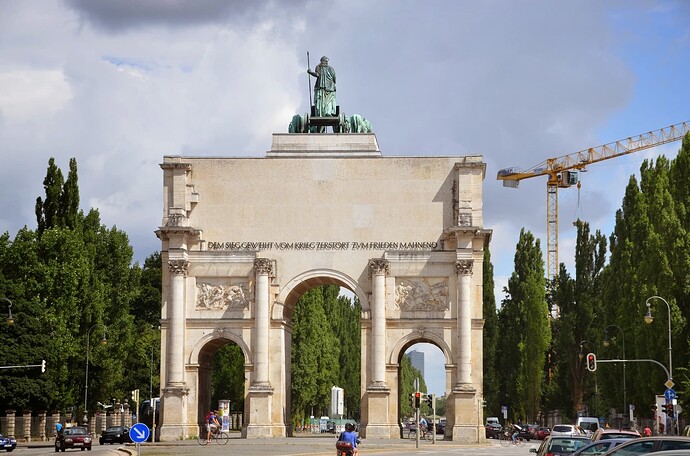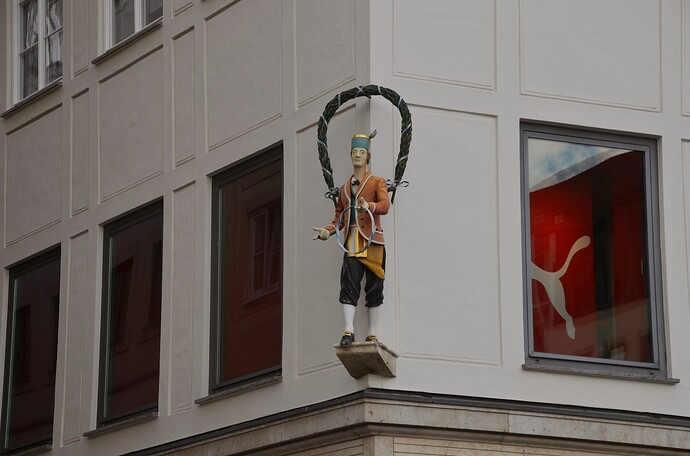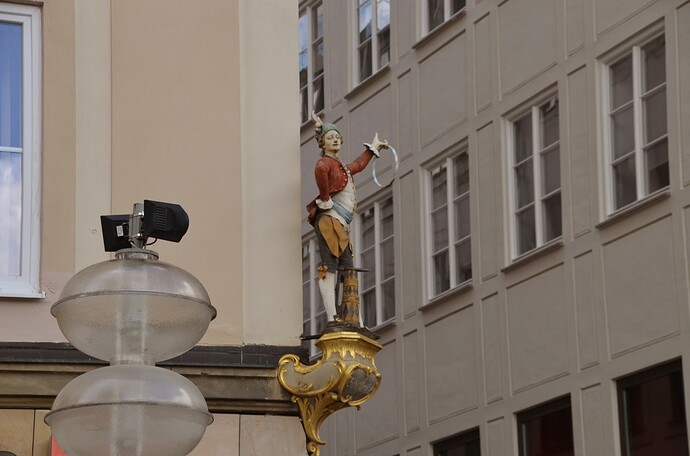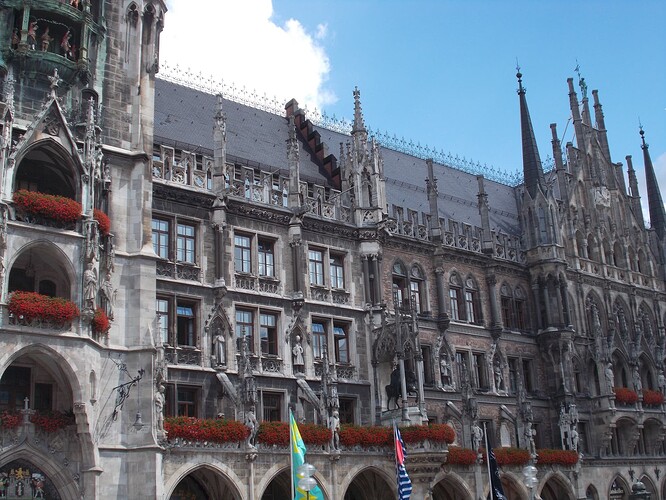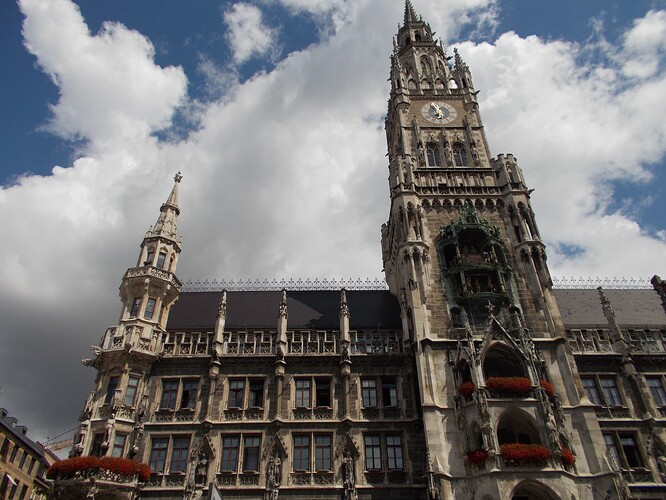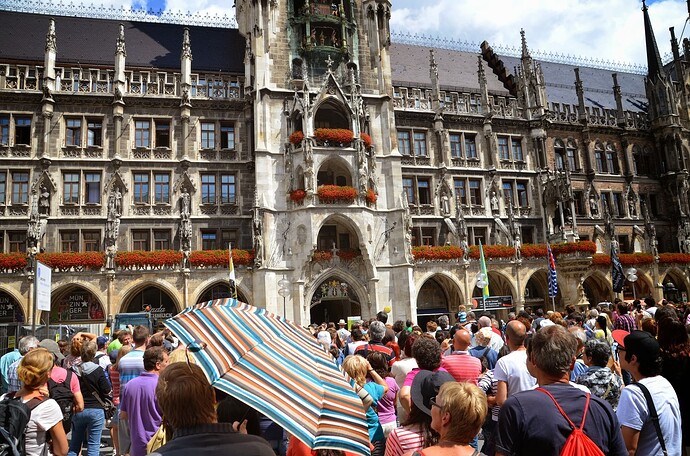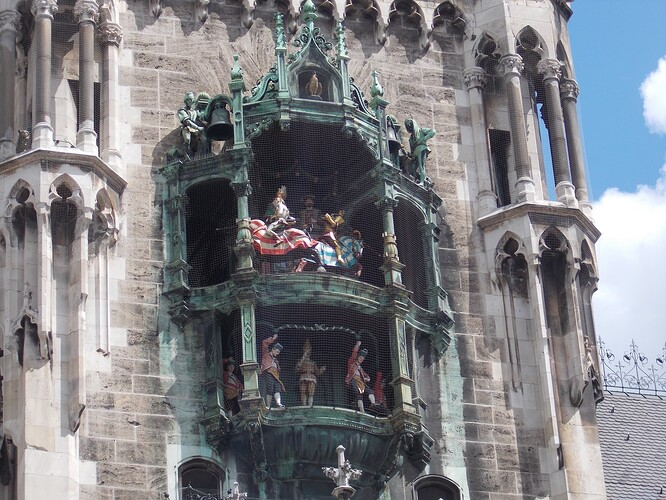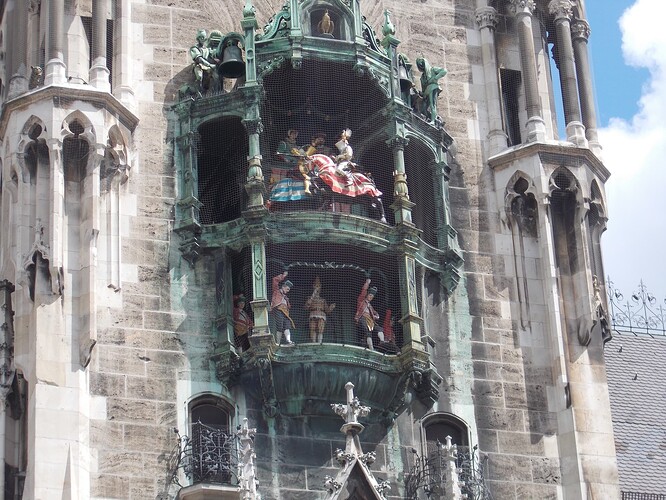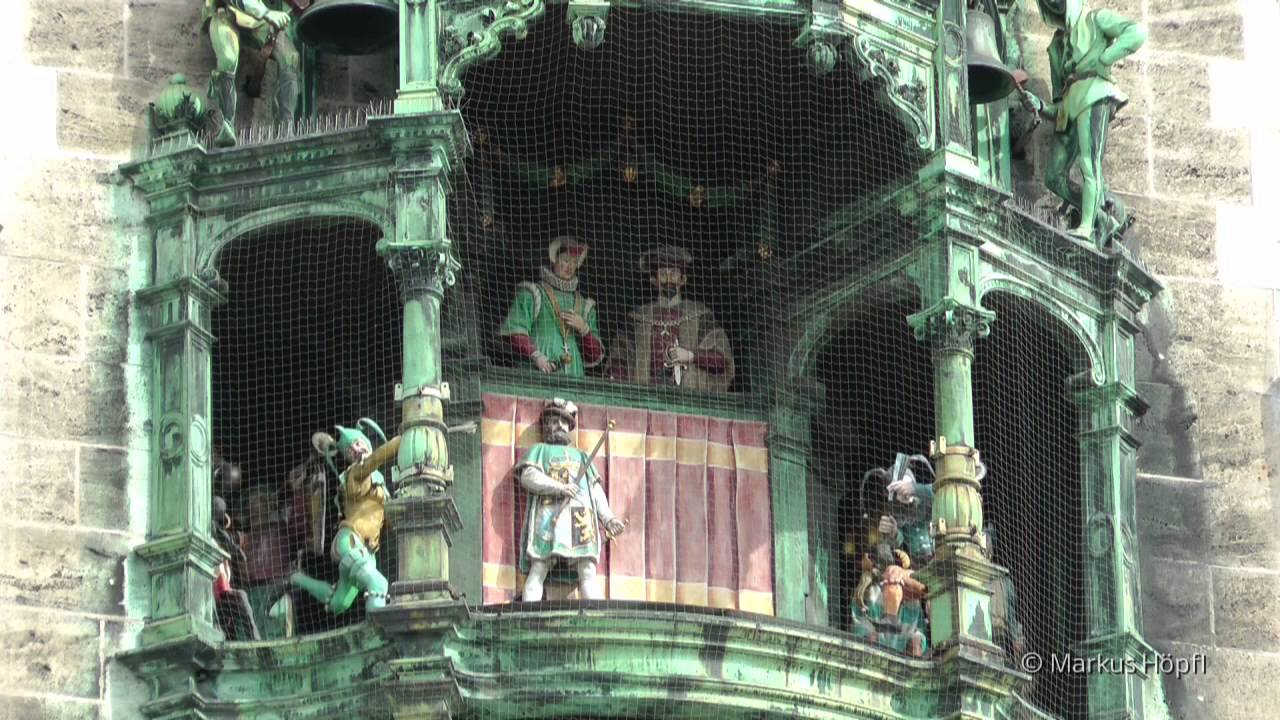One of our Munich stops was the famous Hofbräuhaus, constructed in 1589 by Bavarian Duke Maximilian I, as an extension of the Hofbräuhaus Brewery. This place has served some famous people including Wolfgang Amadeus Mozart, Vladimir Lenin, and even Adolf Hitler, who held the first meeting of the National Socialists there.
Departing to catch the night train to Rome, we saw two more wedding parties, one had roses on the dashboard of the car. Unlike previous trips, we didn’t have access to a sleeper car, possibly due to unavailability. The journey was slightly uncomfortable as our compartment, designed for six people, was fully occupied. We shared the space with siblings Nate and Chelsea Bridgewater, who were on a five-week vacation associated with the LDS Church. Interestingly, Nate, like Kenny, was also an Eagle Scout.
Short train ride clip of a small German town.
Schäffler, barrel maker i.e. cooper
In 1388 this street was an industrial center. These figures were made in 1950 to recognize this history. link
Dragon on the corner of the Neues Rathaus in Munich, Germany
I would love to have one of these, of this size, on the roof over the front door of my house. It would probably reduce the number of solicitors that come to the door and perhaps reduce the number of squirrels and other vermin in the yard.
Rathaus-Glockenspiel in Munich
Interesting facts:
-
Location and Size: The Rathaus-Glockenspiel is a large mechanical clock located in Marienplatz Square, in the heart of Munich, Germany. It consists of 43 bells and 32 life-sized figures.
-
Historical Reenactments: The clock twice daily reenacts scenes from Munich’s history. The first is the story of the marriage of Duke Wilhelm V to Renata of Lorraine in 1568, and the second tells the story of the Schäfflerstanz, also known as the Cooper’s dance.
-
Construction and Timing: Part of the second construction phase of the New Town Hall, it dates from 1908. Every day at 11 a.m. and 12 p.m. (as well as 5 p.m. in the summer) it chimes and re-enacts the two stories.
-
Symbolism of the Cooper’s Dance: According to myth, 1517 was a year of plague in Munich. The coopers are said to have danced through the streets to “bring fresh vitality to fearful dispositions.” The coopers remained loyal to the duke, and their dance came to symbolize perseverance and loyalty to authority through difficult times. By tradition, the dance is performed in Munich every seven years.
-
Duration and Finale: The whole show lasts somewhere between 12 and 15 minutes long depending on which tune it plays that day. At the very end of the show, a very small golden rooster at the top of the Glockenspiel chirps quietly three times, marking the end of the spectacle. Wikipedia
What fun! This video was recorded in July 2013, almost the same time we were there!
Hofbräuhaus am Platzl
Interesting facts:
-
Historical Significance: The Hofbräuhaus am Platzl was originally built in 1589 by Bavarian Duke Maximilian I as an extension of the Staatliches Hofbräuhaus in München brewery. The general public was admitted in 1828 by Ludwig I. The building was completely remodeled in 1897 when the brewery moved to the suburbs. All of the rooms except the historic beer hall (“Schwemme”) were destroyed in the World War II bombings. The reopening of the Festival Hall in 1958 marked the end of the post-war restoration work.
-
Nazi Connection: The Hofbräuhaus am Platzl is a place where Adolf Hitler made a speech founding the National Socialist German Workers’ Party, or the Nazi Party. On 24th February 1920, Hitler presented the Nazi Party’s Twenty Five Point Program in the Hofbräuhaus.
-
Cultural Hub: The restaurant comprises most of the Hofbräuhaus am Platzl, which also includes a ballroom and outdoor Wirtsgarten. Its menu features traditional favorites of Bavarian cuisine such as Brezn (soft pretzel), Obatzda (cheese dip), Hax’n, and sausages such as Bratwurst and Weisswurst. Brews include Helles and Dunkles served in a Maß, Weißbier, and wine.
-
Tourist Attraction: Munich’s largest tourist attraction after the Oktoberfest, the Hofbräuhaus am Platzl is also frequented by locals, many of whom keep their personal steins stored there. During regular hours traditional Bavarian music is played.
-
Famous Patrons: Wolfgang Amadeus Mozart lived around the block from the beer hall in the late eighteenth century. In a poem he wrote, Mozart claimed to have written the opera Idomeneo after several visits to the Hofbräuhaus fortified him for the task. Other famous visitors include Marcel Duchamp, Thomas Wolfe, Louis Armstrong, Mikhail Gorbachev, NASA astronauts, and past American Presidents John F. Kennedy and George H. W. Bush. Wikipedia
Sad to say, our vacation is running out. We are off to Frankfurt tomorrow, after exploring Munich just a bit more in the morning.


